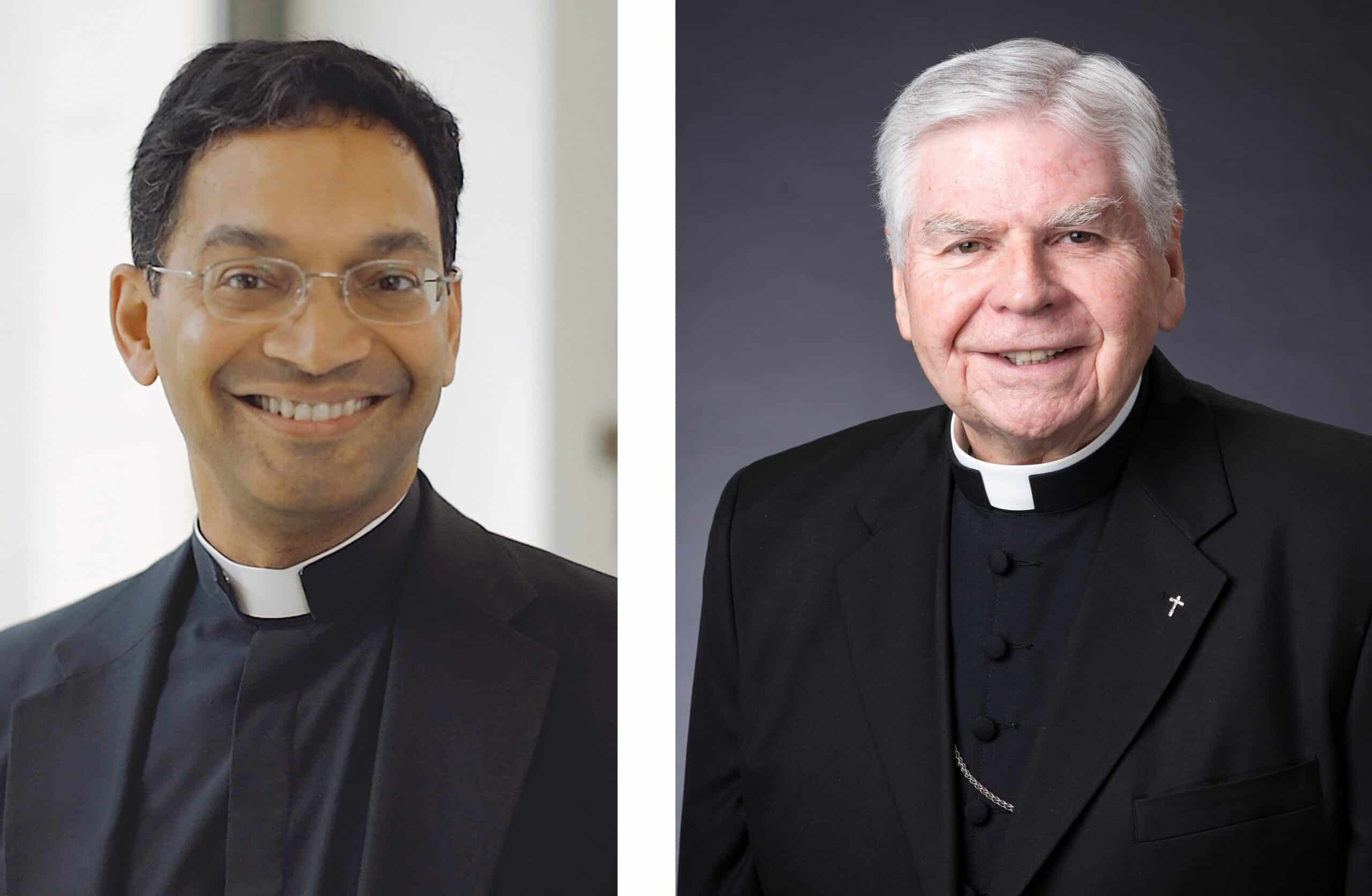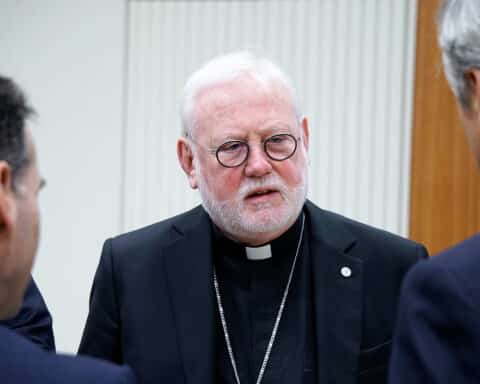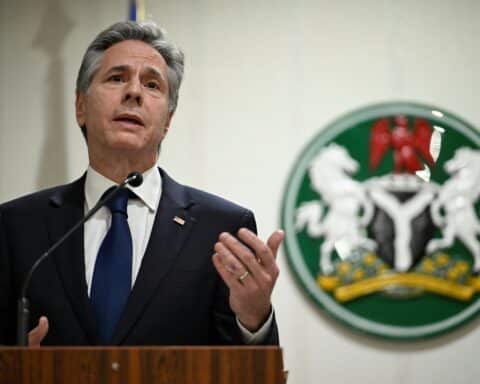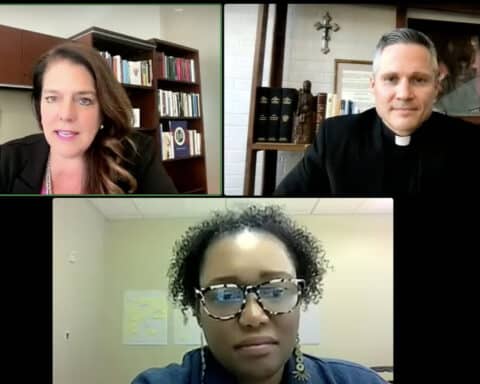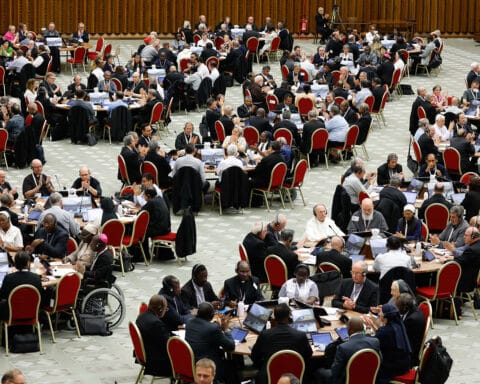(OSV News) — Two Ohio bishops said that a potential merger between the dioceses they lead is part of their shared mission “to advance the Gospel (and) to make disciples of all nations.”
In a joint letter issued Dec. 11, Bishop Earl K. Fernandes of the Diocese of Columbus and Bishop Paul J. Bradley, apostolic administrator of the Diocese of Steubenville, told OSV News they “have begun very preliminary discussions regarding the potential merger of the dioceses.”
The bishops said in their letter that “the Apostolic Nunciature has asked the dioceses to work together to consider how different dimensions of the dioceses, including the temporal aspects of life, might be affected by such a proposal.”
The move comes a year after a similar merger attempt — citing declining demographics and clergy vocations — was put on hold by former Steubenville Bishop Jeffrey M. Monforton, whom Pope Francis appointed auxiliary bishop of Detroit in September.
Gathering information for a proposal
Noting that “while no decision has been made,” Bishop Fernandes and Bishop Bradley said in their letter, “due diligence is needed so an educated and responsible decision can be discerned in a timely manner.”
In an interview with OSV News, both bishops said the potential reshaping of the diocesan territories to meet current and projected pastoral needs requires both temporal efforts and spiritual discernment.
With the decision ultimately up to Pope Francis, Bishop Bradley and Bishop Fernandes explained they are working to present their diocesan information by March 2024 to their fellow Catholic bishops in Ohio: Archbishop Dennis M. Schnurr of Cincinnati, Bishop Edward C. Malesic of Cleveland, Bishop J. Michael Botean of the Romanian Catholic Eparchy of Canton; Bishop Daniel E. Thomas of Toledo; Bishop Bohdan J. Danylo of the Ukrainian Catholic Eparchy of St. Josaphat; Bishop David J. Bonnar of Youngstown; and Bishop Robert M. Pipta of the Byzantine Catholic Eparchy of Parma.
The matter will next be assessed by the U.S. Conference of Catholic Bishops at its spring 2024 general meeting and “then it goes to Rome” for examination by the Vatican’s Dicastery for Bishops and then by Pope Francis, said Bishop Fernandes.
Population, vocations among major considerations
“It could very easily be that we get through this process of information gathering and it’s determined that no, we should leave things as they are, or find some other way to address the issues” prompting the possible merger — specifically, population and priestly vocational decline, said Bishop Bradley.
Bishop Fernandes stressed that “in some ways, instead of trying to control the process, we allow ourselves to be led by the Spirit in the process.”
At the same time, the preliminary inquiry phase entails looking at practical issues such as “our pension funds, our insurance programs, our legal concerns, our building and property maintenance issues,” said Bishop Bradley, admitting that “it’s a daunting task.”
As to which diocese would receive the other in case of an approved merger, Bishop Fernandes said, “we have no way of knowing that, or what the Holy Father’s mind will be about that.”
Still, said Bishop Bradley, “Columbus is the diocese that quite likely would be asked to receive (the Steubenville Diocese) as part of their local church,” as “there’s a question as to whether the diocese is viable for the future.”
Ohio’s dioceses
In that case, a merger would be a kind of homecoming for the Steubenville Diocese, which was created by Pope Pius XII in 1944 as a missionary diocese from the eastern part of the Columbus Diocese.
Besides Columbus and Steubenville, Ohio has three other Catholic dioceses — Cleveland, Toledo and Youngstown — and one archdiocese, Cincinnati.
Bishop Bradley noted the move would not affect Franciscan University of Steubenville, which is privately owned and operated by the Franciscan Friars of the Third Order Regular of the Province of the Most Sacred Heart of Jesus.
While the 13 southeastern counties of the Steubenville Diocese represent some of Ohio’s most rural areas, the Columbus Diocese — founded in 1868, and spanning 23 counties in central and south-central Ohio — is a mix of rural and urban areas, with the city of Columbus becoming increasingly diverse, said Bishop Fernandes.
“One out of every seven people who’s coming to Mass now in the Diocese of Columbus speaks Spanish,” he said. “We’re also seeing a large influx of African migrants. We have a Swahili-speaking community, a Ghanaian community, a Nigerian community. We have a Francophone community of Africans as well as a Cameroonian community that speaks English … and two Indian communities, the Syro-Malabar Church and Malankara Church, a Tamil-speaking community. So Columbus is a metropolis.”
At the same time, “the rest of the Diocese of Columbus is largely rural,” said Bishop Fernandes, adding that he has driven more than 40,000 miles over the past year and a half for pastoral visits throughout his diocese.
Plans by tech giant Intel to build two semiconductor chip factories about 40 miles outside of Columbus will further impact the makeup of the diocese, as tens of thousands of jobs are created and families move into the area — and “we want to be ready for it,” he said.
The Catholic population
According to 2021 statistics, the Columbus Diocese has a Catholic population of nearly 290,000 out of a total population of just over 2.8 million. Statistics on the Steubenville Diocese from 2020, the latest available, show that there are just over 30,000 Catholics out of a total population of about 496,000.
Both bishops said that news of the merger has sparked a range of reactions among the faithful.
For some, the announcement has been “good to know, because in the past there was really not much information that was shared,” said Bishop Bradley. “So I think they were glad to know that there is movement and growth.”
Others have been more wary and even “suspicious,” since the prospect “dredges up fears,” he said.
“I just don’t think we’re going to be able to help having a variety of reactions,” said Bishop Bradley. “But as always, we just keep trying to respond to any doubts or questions with as much as we can with great information. … I believe that communication is key and we need to keep everybody as involved and informed as possible along the way, and to help everybody to understand that, whatever the outcome is, it doesn’t affect who we are as Catholics … (or) the quality of our faith, what it is that we believe.”
A matter of mission
“Change is difficult for everyone. We see it at parish level with parish closures and mergers, or when you get a new pastor,” said Bishop Fernandes. “Change is simply difficult.”
Yet “the pope calls us to move from maintenance to mission,” he said. “So the folks in Steubenville and the folks in the Diocese of Columbus, we have the same mission to advance the Gospel, to make disciples of all the nations, to let the Gospel penetrate every strata of culture. And so we can’t let our structures, our old way of doing things, hinder us in carrying out the mandate, which is from the Lord himself.”
In the meantime, Bishop Bradley said, “We continue to preach the Gospel, and continue to provide pastoral care for our people.”

